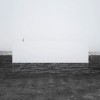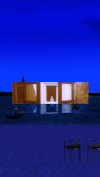Fata Morgana – A Room for Venice
1 of 5
The smell of the sea awakens me.
How long have I been asleep?
Built upon the precarious substrate of water, Venice - city of maritime trade turned theme park - is both an artifact and ever shifting target. Throughout the years it has adapted to each prevailing conqueror and culture that made it a home. The grand buildings that line the canals are a reflection of the wealth and trade that transformed a collection of mud banks into an economic and maritime power. How is it that a city which has thrived and adapted to past forces of change now become frozen in time? Acqua Alta itself is a constant reminder that the city of Venice is always under threat and we see new civil engineerings being deployed to keep even higher waters due to climate change at bay. Yet it is still a commodified dream - a fata morgana if you will - flattened into a single fading image.
A Room for Venice aims to go back to basics by revealing that beauty which is already present. The pavilion we designed is a floating structure of angled reflective glass that sits in front of the Piazza San Marco and in turns focuses, blurs, and reflects the existing form of the city. This platform is anchored to the canal floor and rises sympathetically with the tides while its height and angle break the line of the horizon to force a new interpretation of and relationship with the water. This new horizon becomes a backdrop for social and cultural events as well as a barometer for atmospheric fluctuations. We choose glass specifically not only due to its long history of craftsmanship within the city but, because its surface - like the water - modulates between moments of clarity and tumult. It is the result of raw energy made still.




